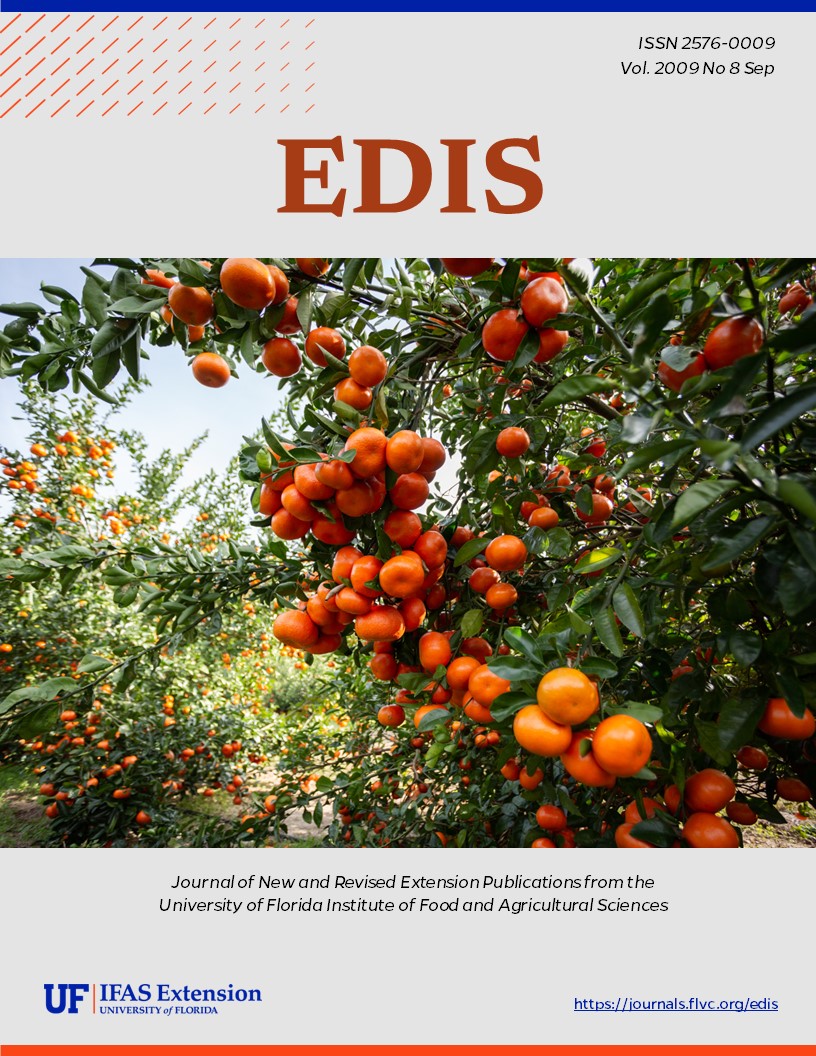Abstract
Revised! EENY-113, a 4-page illustrated fact sheet by H. V. Weems and J. L. Nation, is part of the Featured Creatures collection. It describes this serious pest of olives in the Mediterranean — distribution, identification, life history and habits, hosts, and management procedures. Includes references. Published by the UF Department of Entomology and Nematology, July 2009.
EENY645/IN270: Olive Fruit Fly Bactrocera oleae (Rossi) (Insecta: Diptera: Tephritidae) (ufl.edu)
References
Christenson LD. 1963. Tropical fruit-fly menace. Publ. 4557 from the Smithsonian Report for 1962. p. 441-448.
Christenson LD, Foote RH. 1960. Biology of fruit flies. Annual Review of Entomology 5: 171-192. https://doi.org/10.1146/annurev.en.05.010160.001131
Ebeling WW. 1959. Subtropical Fruit Pests. University of California, Division of Agricultural Science. 436 p.
Economopoulos AP. 1972. Sexual competitiveness of g-ray sterilized males of Dacus oleae. Mating frequency of artificially reared and wild females. Environmental Entomology 1: 490-497. https://doi.org/10.1093/ee/1.4.490
Economopoulos AP, Giannakakis A, Tzanakakis ME, Voyadjoglou AV. 1971. Reproductive behavior and physiology of the olive fruit fly. 1. Anatomy of the adult rectum and odors emitted by adults. Annals of the Entomological Society of America 64: 1112-1116. https://doi.org/10.1093/aesa/64.5.1112
Froggatt WW. 1909. Report on parasitic and injurious insects. 1907-1908. New South Wales Department of Agriculture. 115 p.
Haniotakis GE, Kozyrakis K, Bonatsos C. 1986. Control of the olive fruit fly, Dacus oleae Gmel. (Diptera, Tephritidae) by mass trapping: Pilot scale feasibility study. Journal of Applied Entomology 101: 343-352. https://doi.org/10.1111/j.1439-0418.1986.tb00868.x
Haniotakis GE, Mavraganis VG, Ragoussis V. 1989. 1,5,7-Trioxaspiro[5.5]undecane, a pheromone analog with high biological activity for the olive fruit fly, Dacus oleae. Journal of Chemical Ecology 15: 1057-1065. https://doi.org/10.1007/BF01015199
Hendel F. 1927. Trypetidae. Stuttgart: E. Schweizerbart'sche Verlagsbuchhandlung. 221 p.
Mazomenos BA. 1983. Biosynthesis of a Sex Pheromone of the Olive Fruit Fly Dacus oleae Gmel. PhD Dissertation. Rijksuniversiteit Gent, The Netherlands. 137 p.
Oakley RG. 1950, January 30. Fruit flies (Tephritidae). Manual of foreign plant pests for fruit flies, Part 3. p. 167-246. (unpublished)
Phillips VT. 1946. The biology and identification of trypetid larvae (Diptera: Trypetidae). Memoirs of the American Entomological Society 12: 1-161.
Rice R. (July 2000). Bionomics of the olive fruit fly, Bactrocera (Dacus) olea. University of California Plant Protection Quarterly. pp 1-5. http://www.uckac.edu/ppq/PDF/00July.pdf (27 July 2009).
Varela L, Vossen P. (September 2006). Olive fruit fly. University of California Cooperative Extension - Sonoma County. http://cesonoma.ucdavis.edu/files/27231.pdf (30 September 2010).
Wood M. (February 2009). Can small foe foil olive fruit fly? USDA News & Events. http://www.ars.usda.gov/is/AR/archive/feb09/olive0209.htm (10 March 2009).
Zalom FG, Vossen PM, Van Steenwyk RA. (January 2009). Olive fruit fly. University of California Pest Management Guidelines. http://www.ipm.ucdavis.edu/PMG/r583301311.html (9 March 2009).
Zalom FG, Van Steenwyk RA, Burrack HJ, Johnson MW. (February 2009). Olive fruit fly. University of California Pests in Gardens and Landscapes. http://www.ipm.ucdavis.edu/PMG/PESTNOTES/pn74112.html (9 March 2009).

